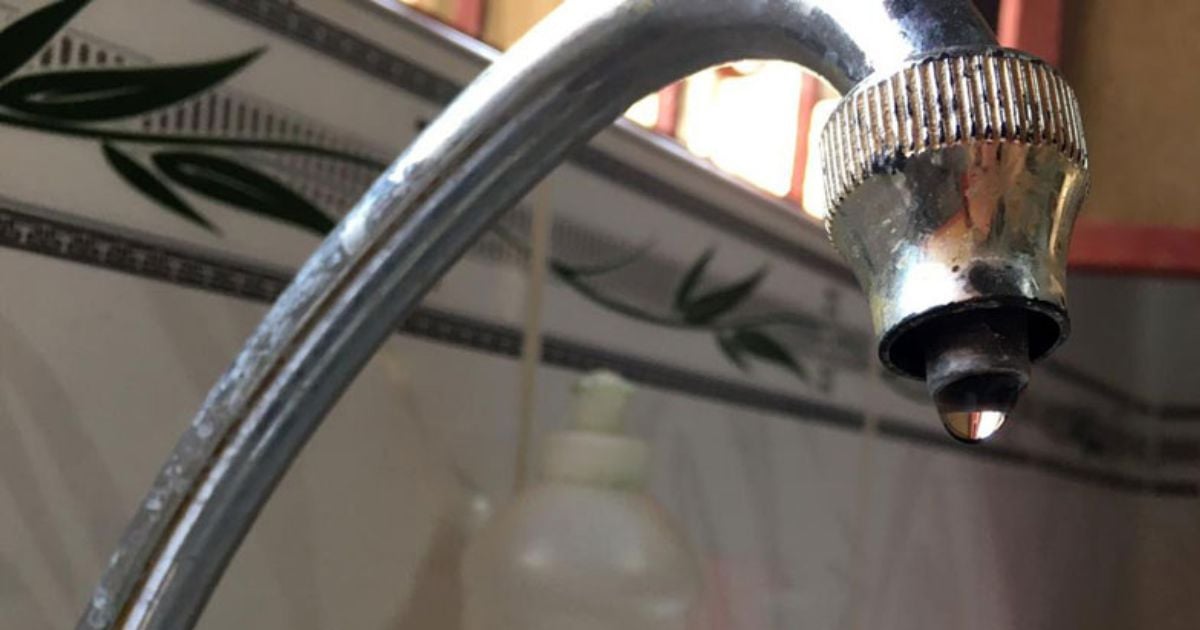The Cuban regime has extended the water distribution cycle in Ciego de Ávila to nine days, a decision that directly impacts the daily lives of residents and highlights the severe water crisis in the region. Described as a "necessary evil" by the official newspaper Invasor, this measure responds to the dire condition of the Ruspoli aquifer, a primary water source for the provincial capital, which has shown a steady decline in water levels since 2020.
As reported by officials from the Ciego de Ávila Hydraulic Utilization Company (Eahca), the well has been operating below critical levels since late 2024. This indicates that water is being extracted from static reserves, an unsustainable situation in the long run. In response, the use of the aquifer has been restricted to supply only certain rural areas, while the provincial capital now relies on the South Basin, accessed through emergency infrastructure established in 2017.
The extended supply cycles also affect economic, social, and agricultural entities, many of which must reorganize their operations in response to the water shortage. In rural areas still served by the aquifer, there is a push to cultivate crops that require less water, such as cassava and mango, as a form of adaptation.
Despite efforts to monitor the aquifer using automated sensors installed through international projects like Euroclima Plus, the situation remains critical. Between 2020 and now, 24 out of 30 months traditionally considered "rainy" have experienced below-average rainfall, hindering the aquifer's natural recharge, according to the cited source.
Residents face the consequences of scarcity: longer waits for water delivery, the need to store water under unhygienic conditions, and a growing sense of insecurity about accessing this vital resource. Experts emphasize the importance of strengthening environmental education campaigns and promoting the rational use of water, especially in communities and schools.
However, the lengthening of supply cycles exposes the Cuban regime's inability to ensure basic services in the face of predictable climatic phenomena that have not been adequately managed. In 2023, the lack of rain left nearly 50,000 Havana residents without potable water. The situation in Havana—a densely populated area—revealed the lack of sustained investment in water infrastructure, exacerbated by the deterioration of pumping and distribution systems. In 2024, droughts again made headlines as Cuba's largest reserve dam was reduced to just 15% of its capacity, further limiting agricultural irrigation and human supply.
This critical reduction in water storage highlighted the regime's failure to implement effective contingency plans amid a recurring climate cycle that has not seen sustainable mitigation actions. Yet, in February, despite the adverse water scenario, leader Miguel Díaz-Canel continued to present optimistic figures on buffalo meat and milk production, disconnected from the reality faced by thousands of families still struggling with water and food shortages.
Understanding the Water Crisis in Ciego de Ávila
What is the main cause of the water supply extension in Ciego de Ávila?
The extension is primarily due to the critical condition of the Ruspoli aquifer, which has been experiencing a steady decline in water levels since 2020.
How is the Cuban regime addressing the water crisis?
The regime has restricted the use of the Ruspoli aquifer and is supplying the provincial capital from the South Basin using emergency infrastructure. However, the efforts have been criticized for failing to provide sustainable solutions to the ongoing crisis.
What impact does the water shortage have on residents and sectors in Ciego de Ávila?
Residents face longer waits for water, the need for unhygienic storage, and insecurity about water access. Economic and agricultural sectors must reorganize due to the shortage, with a shift to less water-demanding crops in rural areas.
